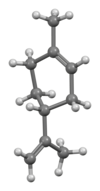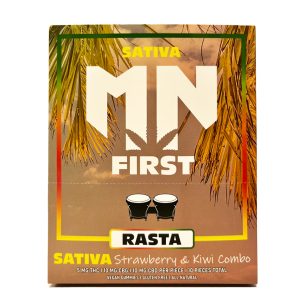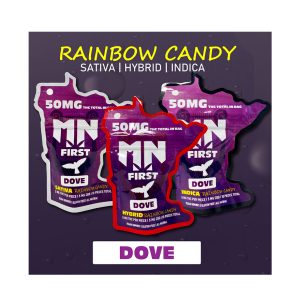**Chemical Properties and Reactions**:
– Limonene is a stable monoterpene that forms isoprene at high temperatures.
– It oxidizes to produce carveol, carvone, and limonene oxide in moist air.
– Dehydrogenation with sulfur leads to -cymene.
– It racemizes at 300 °C and isomerizes to α-terpinene with mineral acid.
– Reacts differently with anhydrous hydrogen chloride and CPBA.
– Biosynthesis involves geranyl pyrophosphate cyclization to form limonene.
**Industrial and Commercial Uses**:
– Commonly used in food, cosmetics, perfumery, and personal care products.
– Acts as a botanical insecticide and organic herbicide.
– Added to cleaning products for fragrance and oil-dissolving properties.
– Used as a solvent in applications like paint stripping and adhesive removal.
– Extracted from citrus fruits and various plant species for industrial production.
**Health, Safety, and Environmental Concerns**:
– Skin irritation potential but generally safe for human use.
– Flammable as a liquid or vapor and toxic to aquatic life.
– Potential health benefits include antioxidant and anti-inflammatory properties.
– Can cause skin irritation, allergic reactions, and respiratory irritation.
– Considered a VOC contributing to air pollution, requiring proper disposal and eco-friendly alternatives.
**Sources and Extraction**:
– Found in citrus fruits like oranges, lemons, and limes.
– Also present in plants such as mint, juniper, and rosemary.
– Commonly extracted from citrus peels through steam distillation.
– Major component of citrus essential oils.
– Industrial production involves extraction from citrus waste and by-products.
**Research, Innovation, and Applications**:
– Ongoing research focuses on therapeutic properties in cancer treatment.
– Innovations in solvent use for various applications.
– Exploration of antimicrobial properties for food preservation.
– Sustainable practices to maximize extraction from citrus waste.
– Collaborations aim to optimize utilization in different sectors.
Limonene is a colorless liquid aliphatic hydrocarbon classified as a cyclic monoterpene, and is the major component in the volatile oil of citrus fruit peels. The (+)-isomer, occurring more commonly in nature as the fragrance of oranges, is a flavoring agent in food manufacturing. It is also used in chemical synthesis as a precursor to carvone and as a renewables-based solvent in cleaning products. The less common (-)-isomer has a piny, turpentine-like odor, and is found in the edible parts of such plants as caraway, dill, and bergamot orange plants.
| |||

| |||
| Names | |||
|---|---|---|---|
| Preferred IUPAC name
1-Methyl-4-(prop-1-en-2-yl)cyclohex-1-ene | |||
| Other names
1-Methyl-4-(1-methylethenyl)cyclohexene
4-Isopropenyl-1-methylcyclohexene p-Menth-1,8-diene Racemic: DL-Limonene; Dipentene | |||
| Identifiers | |||
3D model (JSmol)
|
|||
| ChEBI | |||
| ChEMBL |
| ||
| ChemSpider | |||
| ECHA InfoCard | 100.004.856 | ||
| KEGG | |||
PubChem CID
|
|||
| UNII |
| ||
CompTox Dashboard (EPA)
|
|||
| |||
| |||
| Properties | |||
| C10H16 | |||
| Molar mass | 136.238 g·mol−1 | ||
| Appearance | colorless liquid | ||
| Odor | Orange | ||
| Density | 0.8411 g/cm3 | ||
| Melting point | −74.35 °C (−101.83 °F; 198.80 K) | ||
| Boiling point | 176 °C (349 °F; 449 K) | ||
| Insoluble | |||
| Solubility | Miscible with benzene, chloroform, ether, CS2, and oils soluble in CCl4 | ||
Chiral rotation ([α]D)
|
87–102° | ||
Refractive index (nD)
|
1.4727 | ||
| Thermochemistry | |||
Std enthalpy of
combustion (ΔcH⦵298) |
−6.128 MJ mol−1 | ||
| Hazards | |||
| Occupational safety and health (OHS/OSH): | |||
Main hazards
|
Skin sensitizer / Contact dermatitis – After aspiration, pulmonary oedema, pneumonitis, and death | ||
| GHS labelling: | |||
   
| |||
| Danger | |||
| H226, H304, H315, H317, H410 | |||
| P210, P233, P235, P240, P241, P242, P243, P261, P264, P272, P273, P280, P301+P330+P331, P302+P352, P303+P361+P353, P304+P340, P312, P333+P313, P362, P370+P378, P391, P403+P233, P405, P501 | |||
| NFPA 704 (fire diamond) | |||
| Flash point | 50 °C (122 °F; 323 K) | ||
| 237 °C (459 °F; 510 K) | |||
Except where otherwise noted, data are given for materials in their standard state (at 25 °C [77 °F], 100 kPa).
| |||
Limonene takes its name from Italian limone ("lemon"). Limonene is a chiral molecule, and biological sources produce one enantiomer: the principal industrial source, citrus fruit, contains (+)-limonene (d-limonene), which is the (R)-enantiomer. (+)-Limonene is obtained commercially from citrus fruits through two primary methods: centrifugal separation or steam distillation.








